What is Gabagool, and how do I know which one to order? If this sounds like something that has happened to you or someone you know, we have the perfect solution.
Have you ever been in a situation where you’re unsure what type of meat is being served?
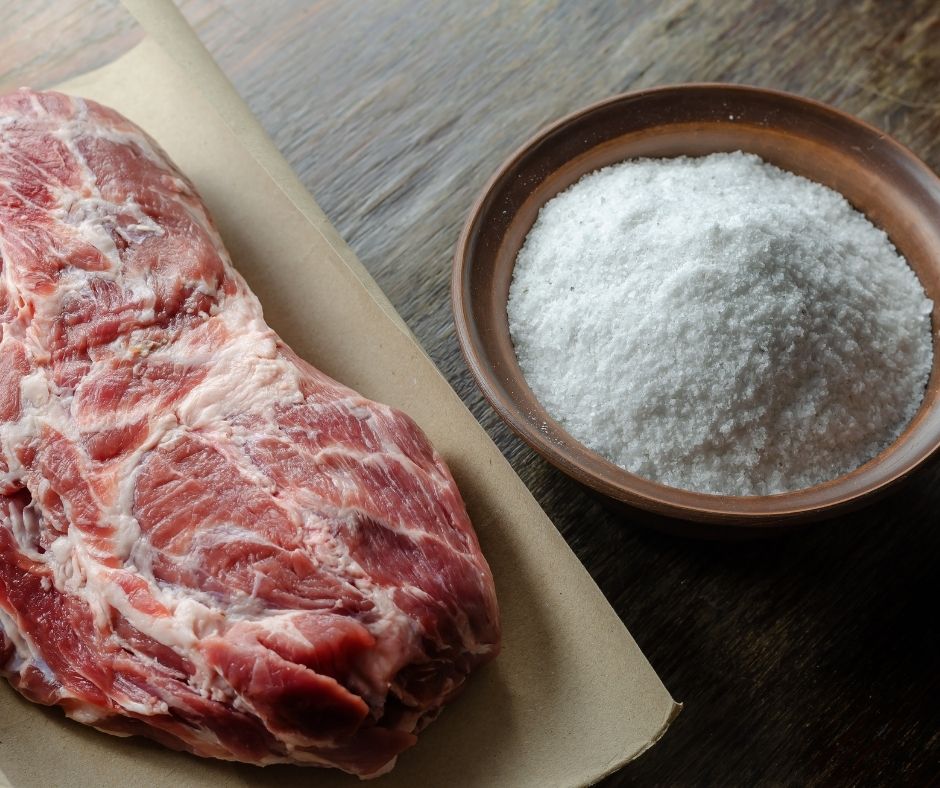
We’ll teach you all about these different types of meats so that next time your server asks if it’s gabagool or capicola, you can confidently say “yes!” with confidence.
Our goal is to make ordering at restaurants easier by teaching people about the different meats and their flavor profiles. It’s our mission to help people feel confident when ordering their food at restaurants.
We’re going to teach you everything there is to know about gabagool so that your next sandwich will never go without it again.
And if you want more than just one type of meat on your sandwich, check out our other articles for some great recipes and ideas!
What the F*ck is Gabagool?
Also known as Capicola or Coppa, Gabagool is a type of sandwich that has been around for many years. It’s typically made with Italian meats and cheeses on a long roll.
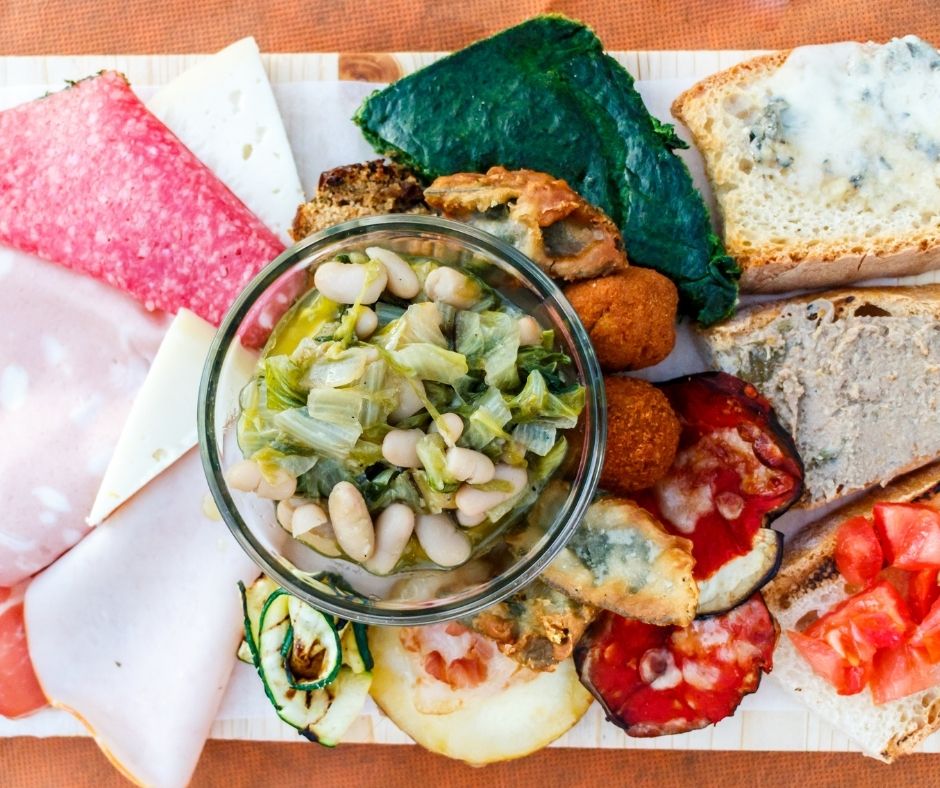
The word “gabagool” comes from the Sicilian dialect, which means “a mess of things thrown together carelessly or without order.”
This name reflects how this dish was initially prepared by throwing all the ingredients into one pan and cooking them all together.
The Word Gabagool Explained
Gabagool is an Italian-American slang word originating in Southern Italy. It’s derived from “capicola,” which means ham and salami combo sandwich.
The term could be translated to “Slice of Ham” and may also be used to roughly refer to either a sandwich that includes capicola or any type of sandwich containing ham, for that matter.
It was most widely popularized in America by Tony Soprano on the HBO series–The Sopranos.
The Origins of Gabagool and How Capicola is Made Today
The Origin
Gabagool has been around for centuries. It’s most commonly found in the United States and Italy, but it can be traced back to ancient Greece.
The word “gabagool” comes from the Italian word “gabbagione,” which means “a mess.” This is because this dish was initially made by throwing together whatever ingredients were on hand at the time.
This type of food has become a staple in many cultures over time, and it’s not hard to see why! It tastes great with just about any meat or vegetable you want to add, so it’s perfect for anyone who wants to experiment with their cooking skills.
Plus, there are tons of different ways to make gabagool – some people like theirs spicy while others prefer milder flavors.
How Capicola is Made Today
Capicola is made from pork shoulder that has been cured with salt and other spices such as garlic or black pepper. This process often takes between six months to two years, depending on how salty one wants their slices.
Capicola, which most consider being a cross between prosciutto and sausage, is prepared by seasoning large pieces of pork shoulder (or sometimes neck meat) with red or white wine, garlic, and various herbs.
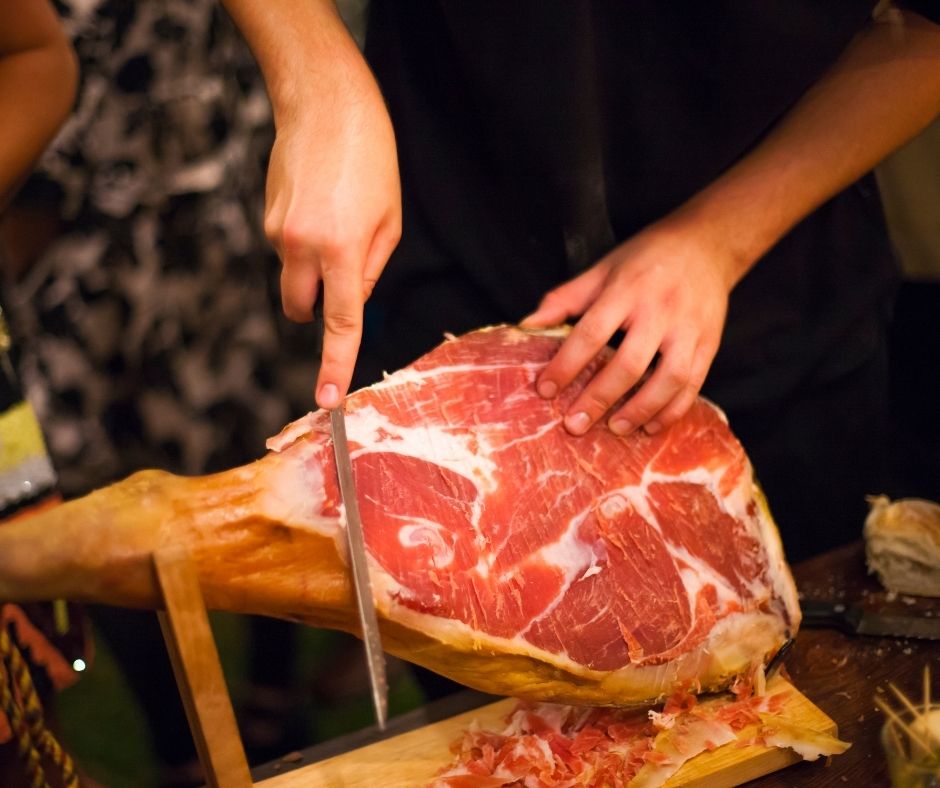
It’s then stuffed into a natural casing before being hung for up to six months so that it can cure. Capicola also often gets smoked in one form or another as well.
In America, this meat is usually found sliced thin and served cold. While there are no strict rules for what goes inside a gabagool sandwich, most people use capicola ham alongside provolone cheese and lettuce with olive oil on top. All these ingredients have been around since ancient times.
Capicola can be served as an appetizer on top of toasted Italian bread with olive oil and salt, or it can be used as a topping for pizza. You might also find it in sandwiches like cheesesteaks’ or hoagies. So if you’re looking for something new to try, give this dish a shot!
What Does Coppa Taste Like?
Coppa is similar in taste to both prosciutto and pancetta—but without the saltiness present in either of the two. Instead, it has a slightly sweet flavor from the curing process and a hint of spice that cuts through it all.
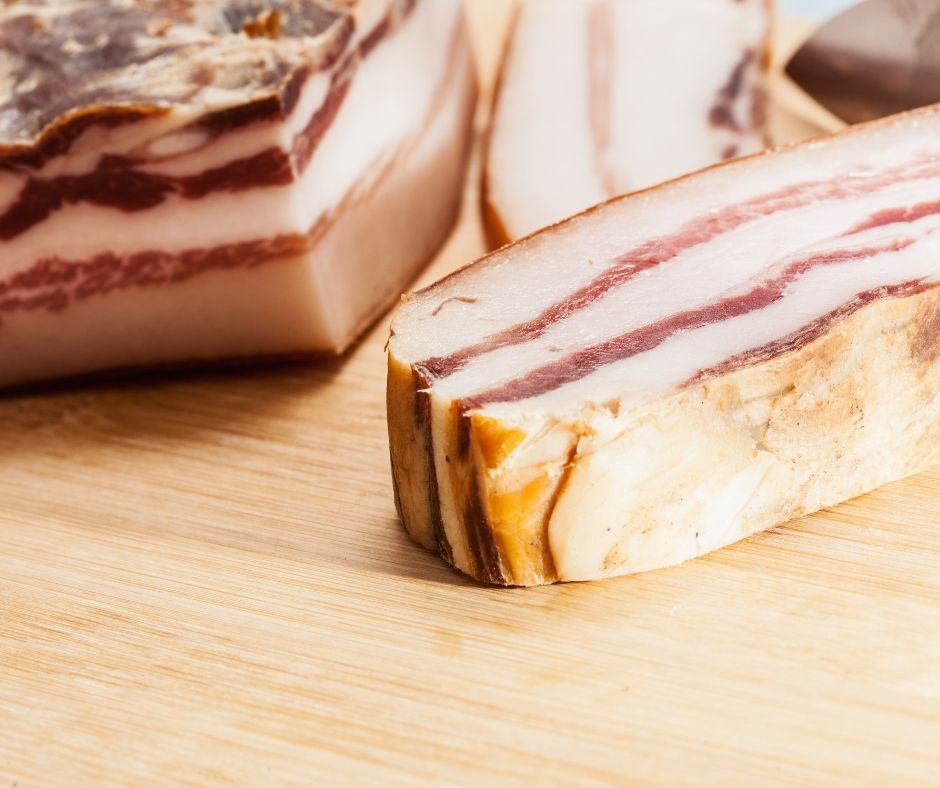
In general, it’s not quite as salty or tough as some other types of ham. While Italians eat it almost exclusively, they enjoy its versatility because while it usually needs to be thinly sliced–you could also go for heavier portions if you’re American.
The Health Benefits of Eating this Delicious Cured Meat
Eating gabagool is essential to your health.
Gabagool is a healthy food that’s eaten in many different ways, and it’s delicious. It’s also easy to make, so you don’t have to go out of your way to eat it. You can even buy pre-made gabagool at the grocery store if you’re not feeling up for cooking.
Gabagool contains many nutrients that are important for your health. It has high levels of protein, vitamin A, and calcium. You can also find iron in it as well as other vitamins and minerals. These all help with the growth and development of your body, which is why eating gabagool is so beneficial.
When you eat gabagool regularly, you will notice an improvement in how you feel overall because it provides these essential nutrients to keep your body functioning correctly.
Plus, there’s no better feeling than knowing that what you’re putting into your body benefits it instead of harming it or making things worse, as some foods do!
Eating gabagool will help keep you full and energized throughout the day, which means less time spent worrying about what to eat next or how hungry you are. Plus, eating this dish will give you more energy than other foods because of its high protein content.
It’s hard to find a healthier option that tastes as good as this one does. Eat more gabagool today!
The Difference Between Gabagool and Prosciutto
Prosciutto is a type of ham that is made from pork. It’s usually served raw, thinly sliced as part of an antipasto or appetizer platter.
Gabagool, on the other hand, is a type of sausage found in Italian cuisine. It’s typically boiled and then fried with garlic, olive oil, salt, and pepper to create this delicious dish.
The best way to tell them apart? You can’t eat one without the other. So if you want to make your next meal more interesting, give these two types of meat a try together. You won’t regret it. And if you don’t like either one of them, well, then we’ll never know because they taste so different.
It’s important to know what you’re buying when shopping for food to get the best quality product possible. So if you want some delicious gabagool, make sure you buy it fresh, so it doesn’t spoil too quickly.
And if you want some high-quality prosciutto, make sure your butcher knows how long they’ve had their stock on hand—because older meats will have less flavor than fresher cuts!
Here’s a summary breakdown of the differences between the two:
| Location in Animal | Meat Used | Size | Cost | Texture and Appearance | |
| Capicola | It is located in a pig’s muscle (running from the neck to the fifth rib of the pork shoulder). | It’s always made of pork—from the pig’s coppa muscle. | Smaller in size—because it’s made from a muscle running through the pig’s neck. | Less costly to prepare. | Even distribution of fats on the outer edge. |
| Prosciutto | It is located in the pig’s hind leg quarter (the same cut used for hams. | It is sometimes made from other animals. | Bigger in size—because it’s made from the pig’s whole bone-in ham. | Costly to prepare—because of its size. | Fatter on the outer edge. |
A Capicola Recipe For You to Try at Home
Making your own capicola will save money and customize this dish’s flavor profile to suit your taste buds. Plus, it tastes better than anything store-bought because there are no preservatives added.
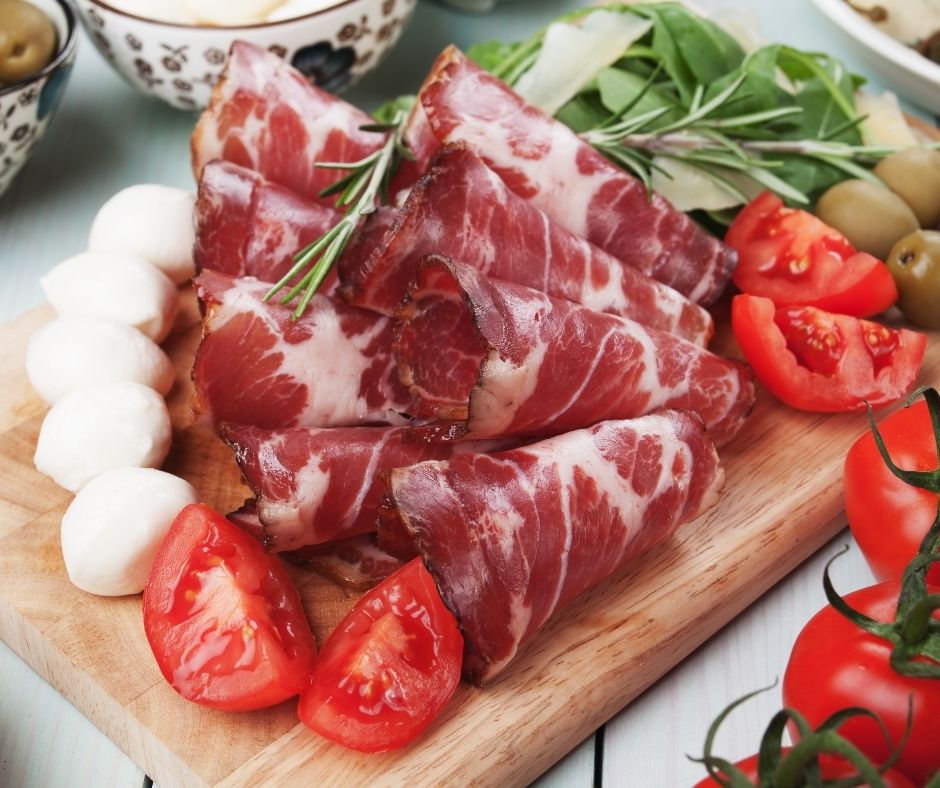
Here’s what you’ll need for this recipe:
Ingredients
- 5½ lb ground pork shoulder (or any lean cut)
- 5 tsp kosher salt
- 1 tbsp sugar
- 1tbsp Prague powder
- Two crushed bay leaves
- ½ tbsp freshly ground black pepper
- ¼ tsp crushed red pepper flakes (optional)
- ¼ tbsp smashed juniper berries
- Paprika to taste
- ½ tsp ground nutmeg
- A food processor or blender with a grinder attachment OR a hand grinder OR just buy pre-ground beef from the butcher counter at your grocery store
Note: You can adjust these measurements according to taste preference or if using different cuts of meat.
Preparation
- Measure out all the dry ingredients together—these include the Prague powder, bay leaves, salt, nutmeg, sugar, black peppercorns, and juniper berries.
- Place the juniper berries, bay leaves, and black peppercorns into a spice grinder and process until fine.
- Add the ground spices to the rest of your powders and mix thoroughly. If you wish, try experimenting with other flavors. If you’re feeling adventurous, try adding some cayenne powder or crushed red pepper for an extra kick!
- Take your pork neck and place it on the work surface. Roll tightly length-ways. Use butchers twine to tie the roll firmly so that meat and fat are distributed evenly in each slice when you slice across the grain.
- Place the rolled pork neck in a catch tray or roasting tin and sprinkle the curing mixture evenly over the meat. Make sure to work your way around evenly until all the fat is covered.
- Feed the prepared pork into a vacuum packing bag and seal it—double seal for security.
- Place your vacuum-packed meat in the refrigerator for seven days for curing. This will help break down any remaining bacteria and prevent the meat from spoiling while ensuring that all-natural flavors are fully developed.
- After seven days of curing, remove the pork neck from its bag and wash it thoroughly under cold running water. Dry with paper towels after rinsing.
- Apply a generous coating of paprika onto the rinsed pork neck and rub vigorously to ensure even coverage.
- Allow the meat to age for six weeks at 57°F – 65°F with a humidity level of 60%-70%. You may notice the outside harden and form what is called “crust.” This crusting process happens naturally, so don’t worry.
- After six weeks, take the cured meat from the rack and cut the strings away. Next, thinly hand-cut the capicola or use a food slicer to create paper-thin cuts for an optimal texture and flavor with every bite!
Wine and Other Coppa Pairings
The Gabagool sandwich is a popular type of Italian sandwich that has been around for many years. It’s typically made with Italian meats and cheeses on a long roll. This name reflects the way this dish was initially prepared by throwing all the ingredients into one.
We have put together an entertaining list of pairings you won’t want to miss out on for those looking to enjoy some quality wine or other types of alcohol while eating their gabagool.
If you need help finding any specific wines, beers, liquors, or anything else related to food and drink in general, feel free to contact us at whatever time works best for your schedule so we can get started right away!

Community of passionate writers and content creators who share a love for Italian heritage, culture, travel, food, and the Italian-American community. Our mission is to celebrate Italy’s rich history and traditions and connect with others who share the same passion.

